A place to find everything about my (@the-named-anon) 30 days of weevils challenge!
Don't wanna be here? Send us removal request.
Text

New Zealand Giraffe Weevil (Lasiorhyncus barbicornus)
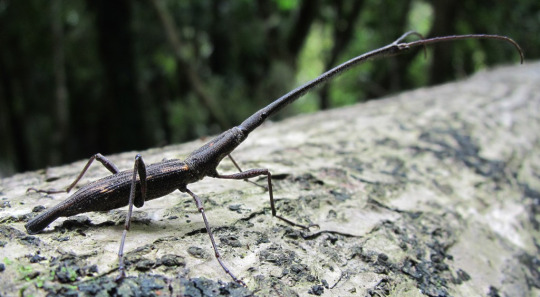
@30daysofweevils
91 notes
·
View notes
Text
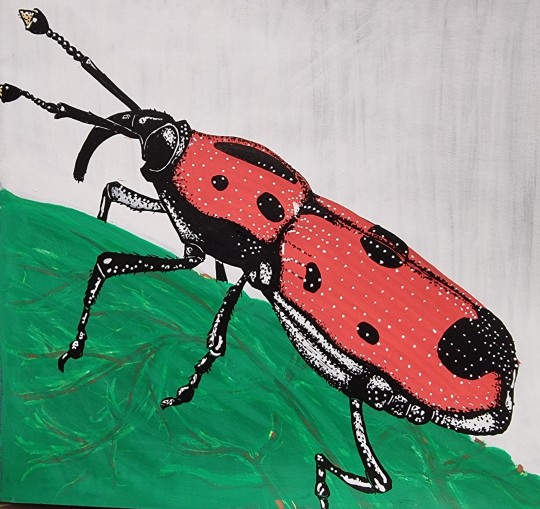
Cocklebur Weevil
(Rhodobaenus quinquepunctatus)
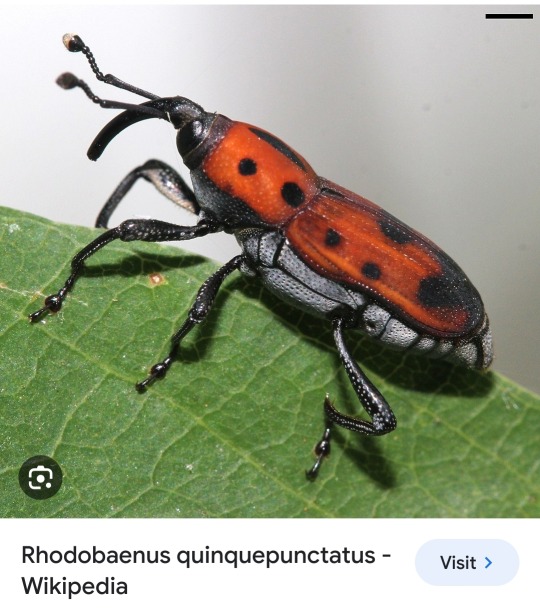
@30daysofweevils
211 notes
·
View notes
Text
thinking about weevil photonic crystal structures...
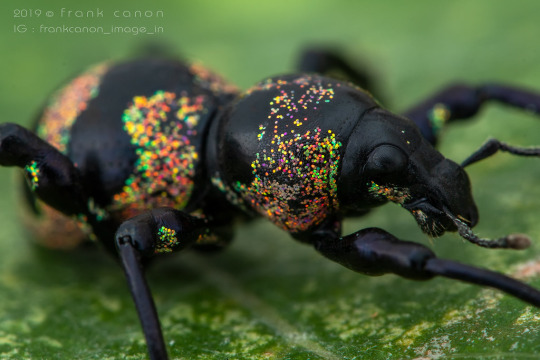
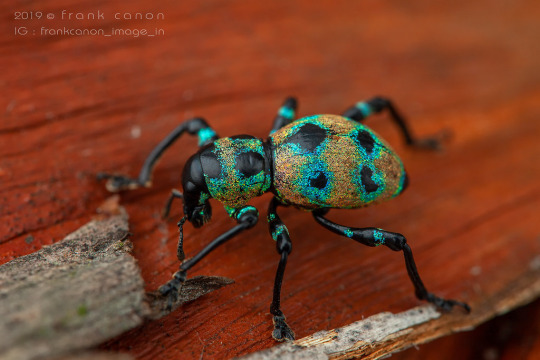

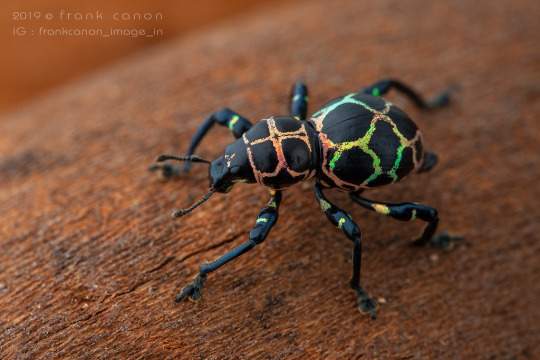
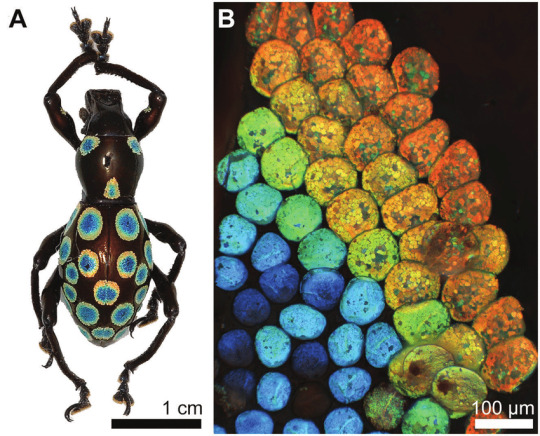
Weevils (such as Pachyrhynchus genera) have evolved epidermal cells that can produce colour through opal-like arrangements of packed spheres, forming a three-dimensional photonic crystalline structure.
13K notes
·
View notes
Text
30 Days of Weevils day 18

Cocklebur Weevil
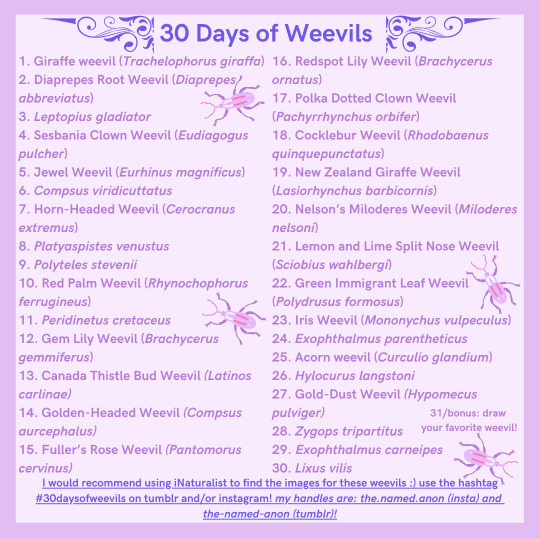
12 notes
·
View notes
Text
30 Days of Weevils, Day 17:

Polka Dotted Clown Weevil

#30daysofweevils#ops weevils#day 17#totally forgot to post this earlier#weevil#Polka Dotted Clown Weevil#illustration
7 notes
·
View notes
Text


@30daysofweevils
11 notes
·
View notes
Text


@30daysofweevils
9 notes
·
View notes
Text
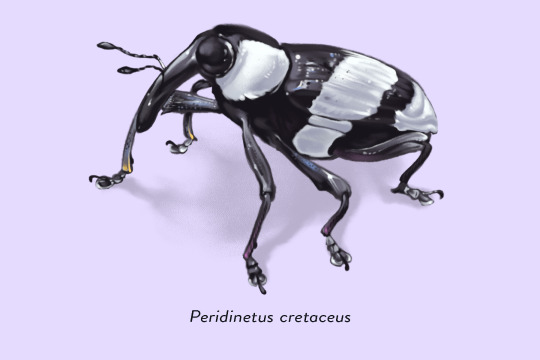
Day 11 of the 30 Days of Weevils art challenge brings us the lovely Peridinetus cretaceus!
As a part of the Flower Weevil subfamily, this weevil is noted for its very round appearance and long rostrum. The large black-and-white spots on its body create an optical illusion when seen in the wild: the black markings make the weevil's contour difficult to identify, thereby blending it into dark backgrounds as a form of crypsis!
Reference image found here!
44 notes
·
View notes
Text
youtube
@30daysofweevils If you have not yet seen this video, NOW IS THE TIME!
11 notes
·
View notes
Text

Half way through this art challenge and I have not made a single accurate weevil yet. I also only had 6 colors and not one of them was brown (until it arrived in the mail tonight when I was nearly finished), so nothing is the right color.
Fuller's rose weevil (Pantomorus cervinus)

@30daysofweevils
#I’m not done with it either so don’t feel bad!!#30daysofweevils#besides who said the 30 days had to be consecutive? (haha)#day 15
8 notes
·
View notes
Text
Oops I picked two weevils that look very similar
Red palm Lily weevil and cocklebur weevil </3
1 note
·
View note
Text
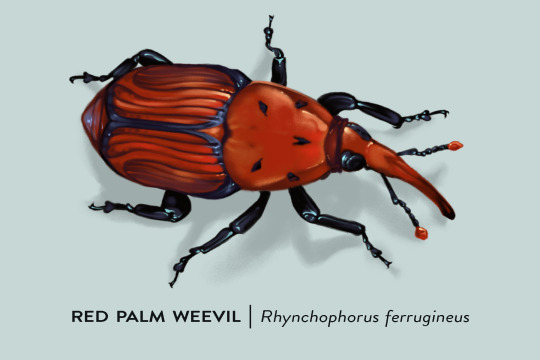
The radical Red Palm Weevil, Rhynchophorus ferrugineus, brings us to Day 10 of the 30 Days of Weevils art challenge!
As their common name implies, this species is a notorious pest to species of palm trees and is considered invasive in many areas worldwide (save for their native continent of Asia). Their distinct red coloration and dark spots vary between individuals, hinting at the possibility of various subspecies!
Reference image found here!
33 notes
·
View notes
Text

Compsus auricephalus (golden headed weevil) with some liberties taken, lol.
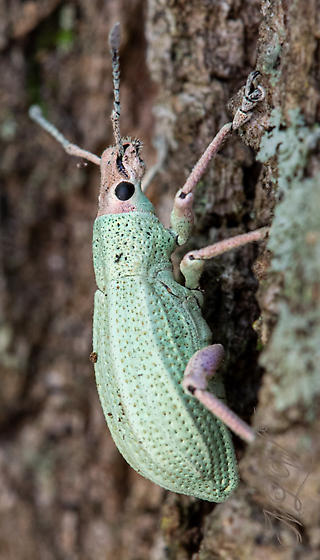
@30daysofweevils
39 notes
·
View notes
Text

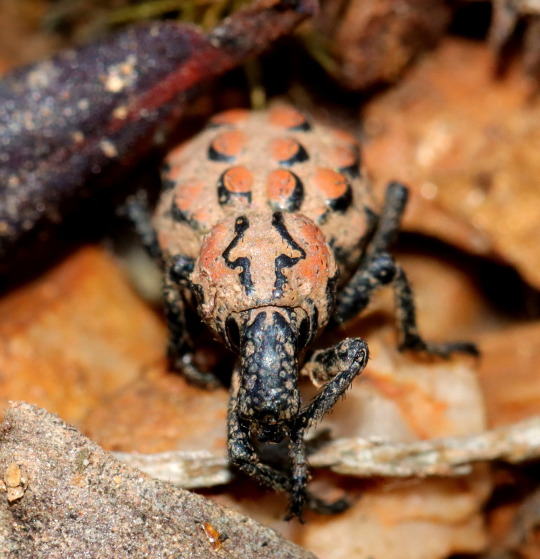
@30daysofweevils
17 notes
·
View notes
Text
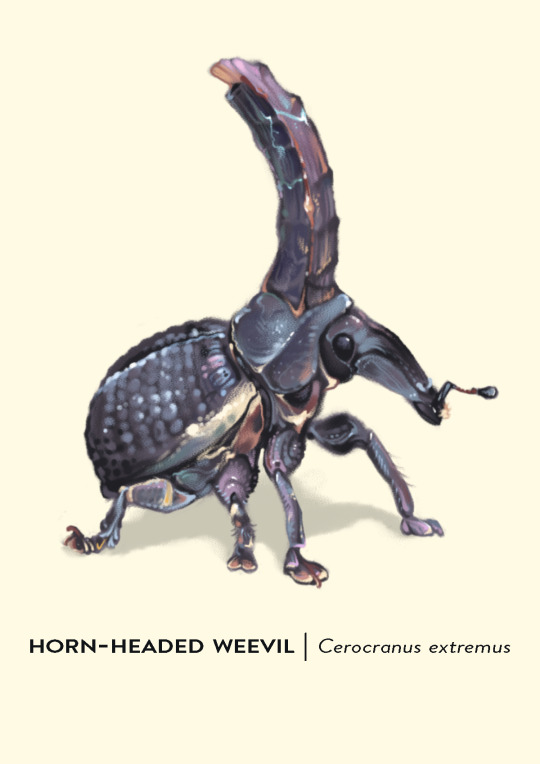
The astounding Horn-Headed Weevil, Cerocranus extremus, claims the 7th slot of the 30 Days of Weevils art challenge!
The distinct "horn" this weevil's named for is actually a build up of waxy secretions from its thorax! Though this horn can grow to dramatic heights, it doesn't appear to hinder its movement or flight. Having only been sighted in forests of New Caledonia, there's not much known about this particular weevil -- but it leaves quite an impression all the same!
Reference image by Damien Brouste, found here!
#30daysofweevils#they are so silly!!!!#(this is the actual look of my pfp… for anyone who’s wondering :) )#fan weevils#day 7
258 notes
·
View notes
Text
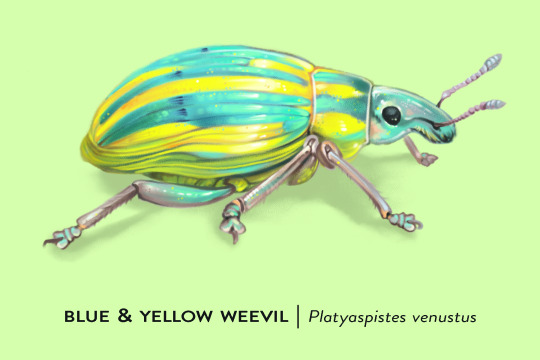
Platyaspistes venustus, also called the Blue and Yellow Broad-Nosed Weevil, kicks off Day 8 of the 30 Days of Weevils art challenge!
Like other broad-nosed weevils, this weevil is characterized by a scar on the tip of its rostrum, left over from mandibular processes that fall off in its adult life. Vibrant colors stripe its elytra, making it a beautiful sight in its native South American environment!
Reference image found here!
109 notes
·
View notes
Text
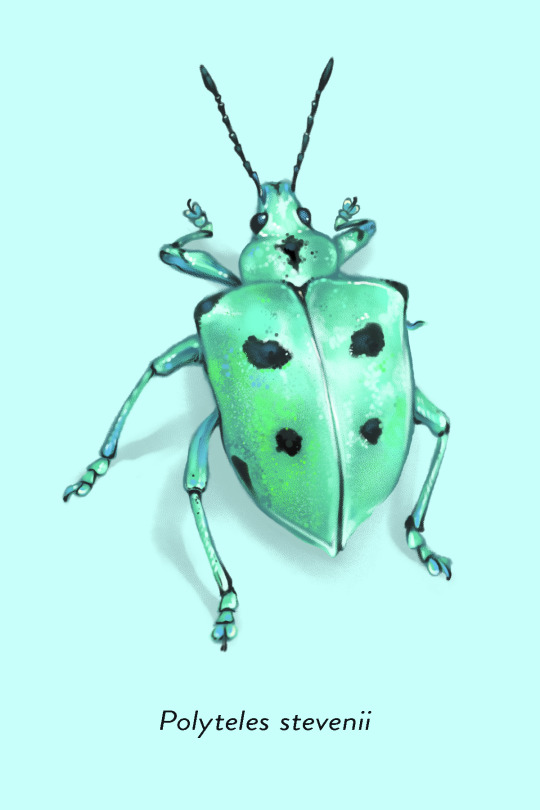
Day 9 of the 30 Days of Weevils art challenge features the dazzling Polyteles stevenii! 💚
This genus of weevils is most notable for their shimmering green elytra, with hues ranging from sea foam to jade! They're endemic throughout South America.
Reference image found here!
30 notes
·
View notes